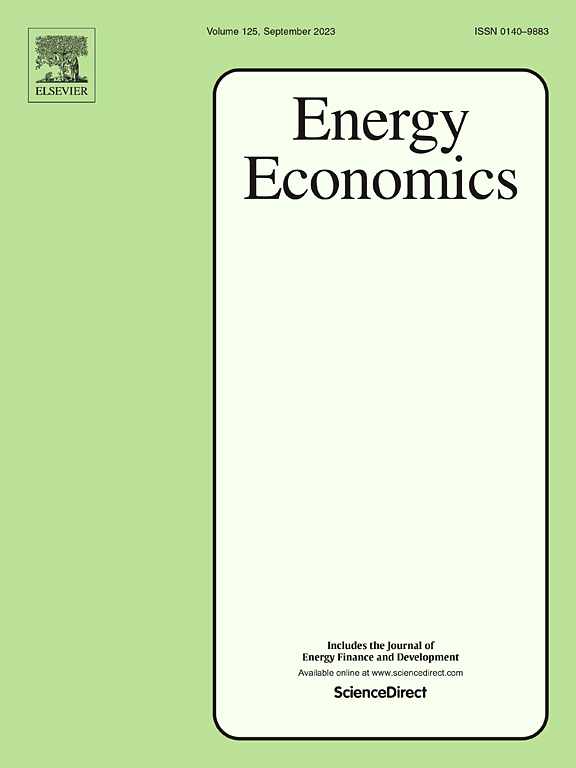Optimal participation of wind power producers in a hybrid intraday market: A multi-stage stochastic approach
IF 13.6
2区 经济学
Q1 ECONOMICS
引用次数: 0
Abstract
The Single Intraday Coupling has imposed the integration of the European intraday electricity markets, taking as a benchmark the continuous trading structure. This has implied the creation of hybrid intraday electricity markets, defined as a mix of continuous and auction-based trading sessions, in those European countries with a former full auction system for this market. In this context, this paper proposes a multi-stage stochastic programming model for deciding the optimal participation of a wind power producer in a hybrid intraday market. This decision is made considering the possibility of participating in subsequent trading sessions, represented by a first continuous-intraday session, followed by an auction-based session and, then, a second section of the continuous intraday. As a final step, in the balancing market, the wind power producer can adjust its energy balance according to the wind power availability. The wind power availability, the prices in the intraday auction session and in the balancing market, and the acceptability of orders in the continuous sessions have been modelled as stochastic parameters. The risk level of the wind producer is represented in the formulation through the CVaR. By doing a deep study of the Spanish intraday market outcomes, we design a realistic case study and conduct several sensitivity analyses regarding the wind power availability, the prices in the market, the possibility of or not of participating in subsequent trading sessions, and the risk level. The main conclusions are: (i) arbitrage is observed in the participation of the wind power producer in the continuous and auction-based intraday sessions, especially under a risk-neutral perspective, (ii) the participation in the intraday continuous session is strongly influenced by the possibility of participating afterwards in the auction session, and (iii) the bidding strategy of a risk-averse wind power producer is mainly linked to the available wind power.
求助全文
约1分钟内获得全文
求助全文
来源期刊

Energy Economics
ECONOMICS-
CiteScore
18.60
自引率
12.50%
发文量
524
期刊介绍:
Energy Economics is a field journal that focuses on energy economics and energy finance. It covers various themes including the exploitation, conversion, and use of energy, markets for energy commodities and derivatives, regulation and taxation, forecasting, environment and climate, international trade, development, and monetary policy. The journal welcomes contributions that utilize diverse methods such as experiments, surveys, econometrics, decomposition, simulation models, equilibrium models, optimization models, and analytical models. It publishes a combination of papers employing different methods to explore a wide range of topics. The journal's replication policy encourages the submission of replication studies, wherein researchers reproduce and extend the key results of original studies while explaining any differences. Energy Economics is indexed and abstracted in several databases including Environmental Abstracts, Fuel and Energy Abstracts, Social Sciences Citation Index, GEOBASE, Social & Behavioral Sciences, Journal of Economic Literature, INSPEC, and more.
 求助内容:
求助内容: 应助结果提醒方式:
应助结果提醒方式:


